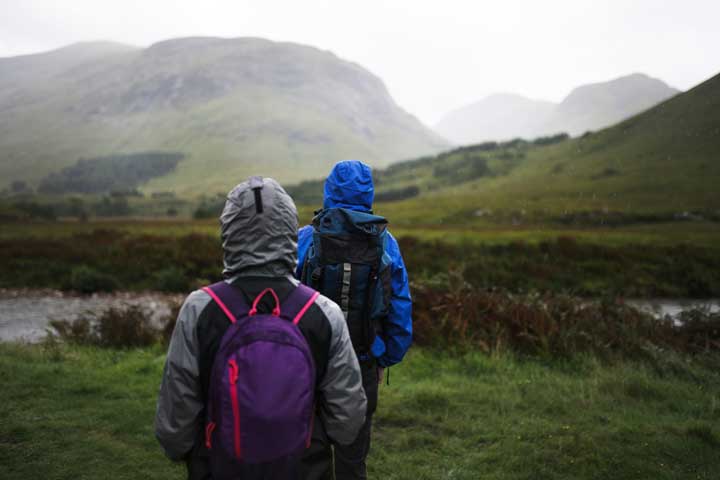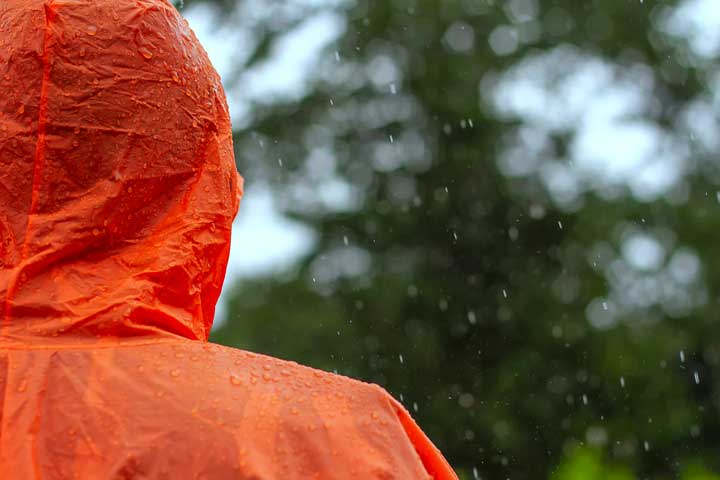In preparing for my outdoor adventures, I’ve had to make some difficult choices. It can be hard to narrow down the equipment necessary for a backpacking trip. After all, especially on longer adventures, every ounce counts.
I’ve often had to choose between two pieces of gear that felt equally important. In some cases, the answer is to pack items that can do double duty. For example, do I need a raincoat, or are windbreakers waterproof?
What Is the Point of a Windbreaker?
A windbreaker is a class of outerwear designed to resist wind chill and occasional light rain. Even in pleasant temperatures, a stiff breeze can make you dangerously cold. A windbreaker blocks the wind from your body to help you retain more warmth.
It’s super light, with very little insulation, making it compact and easy to carry, even (or especially) on long backpacking trips. If the forecast calls for mild or even warm temperatures with anything more than a light breeze, a windbreaker can be the perfect compromise between warmth and weight.
On the other hand, while the lack of insulation makes a windbreaker very light, it also means that it doesn’t hold in much body heat. A windbreaker will stop the wind from leaching body heat from you, but it’s not going to stop you from getting cold over time. If frigid temperatures are predicted in the forecast, it’s best to opt for something warmer than a windbreaker.
Fortunately, it’s really easy to layer with a windbreaker. If you don’t have the luxury of choosing between the insulation and blocking wind, you could instead pack a warm layer and a windbreaker layer. As a bonus, this lets you customize your warmth, so you can dress lighter or heavier as needed on longer trips.

Are Windbreakers Water-Resistant?
While a windbreaker does resist water to some degree, I wouldn’t ever call a windbreaker genuinely water-resistant. The tightly woven fabric that gives the windbreaker its wind resistance will also repel water to some extent. That’s just physics.
If you find yourself caught in heavy rain or are exposed to a drizzle for a long enough time, the fibers themselves will start to get wet. Once that happens, it won’t take long for the whole windbreaker to be saturated. Saturated means cold, and that’s going to be bad. If you anticipate rain, you’ll want to bring a raincoat.
Is a Windbreaker the Same as a Raincoat?

A windbreaker and a raincoat are not the same thing, although a raincoat does offer some wind resistance, and a windbreaker does offer some resistance to rain. A windbreaker will only repel water for a short time and has little insulation, so it’s pretty much only good for one thing – blocking wind.
Don’t let that convince you that a raincoat should always be chosen over a windbreaker, though. Since raincoats use membranes to resist water on the outside, it also means that they can trap moisture on the inside. If you get too warm and start to sweat, you could still find yourself soaked and cold, even though the culprit isn’t the rain.
Can You Wear a Windbreaker in the Rain?
As the name suggests, a windbreaker is intended for wind and, at most, very light rain. The tightly woven fabric that gives a windbreaker its wind resistance only resists water until the fibers get damp. This saturation can happen over time with even the lightest rain, or it can happen very quickly in a downpour. If there’s rain in the forecast, bring a raincoat.
Do Windbreakers Keep You Dry?

The benefit of a windbreaker is that it keeps the wind away from your body while still allowing your body to “breathe.” The fibers of a windbreaker are tightly woven, which blocks all but the strongest of gales but allows your sweat and body heat to evaporate as usual.
Unfortunately, that permeability has the potential to go both ways. In particular, before long, you can expect rain to start soaking through the windbreaker. So, except for a brief drizzle, don’t count on a windbreaker to keep you dry.
Are Windbreakers Necessary?
Whether you need to pack a windbreaker is entirely dependent on the nature of your trip. If you expect mild to warm, dry conditions, a windbreaker is an excellent choice to help keep you warm when it’s breezy. Even a light breeze can quickly draw heat out of your body, leading to hypothermia if the conditions are just so.
Since a windbreaker is so light, I would say that it’s worth making space for in any pack. Even if the weather forecast is gorgeous for the entire duration of your backpacking trip, bring a windbreaker. It’s such a light and simple piece of equipment that I would bring unless I had a good reason not to.
Conclusion
So are windbreakers waterproof, and will they stand up against the rain? Not really. The tightly woven fabric that allows a windbreaker to keep the wind away from your body will repel very light rain for a short period of time. Eventually, though, the fabric will get saturated, and you’ll be both cold and wet, thus negating any benefit the windbreaker might have given you.
Even if the forecast is pleasant and you don’t plan on bringing a raincoat, a windbreaker is a valuable addition to your pack. It’s lightweight and compact and can save you from a lot of unpleasantness outdoors without asking you to sacrifice much room. That kind of reassurance is worth the extra ounce or two.
However, if the forecast even hints at rain, I will skip the windbreaker in favor of something that will keep me dry, even if it means I need to redistribute the weight of my gear. After all, staying warm and dry can be the difference between life and death out in the wild.

